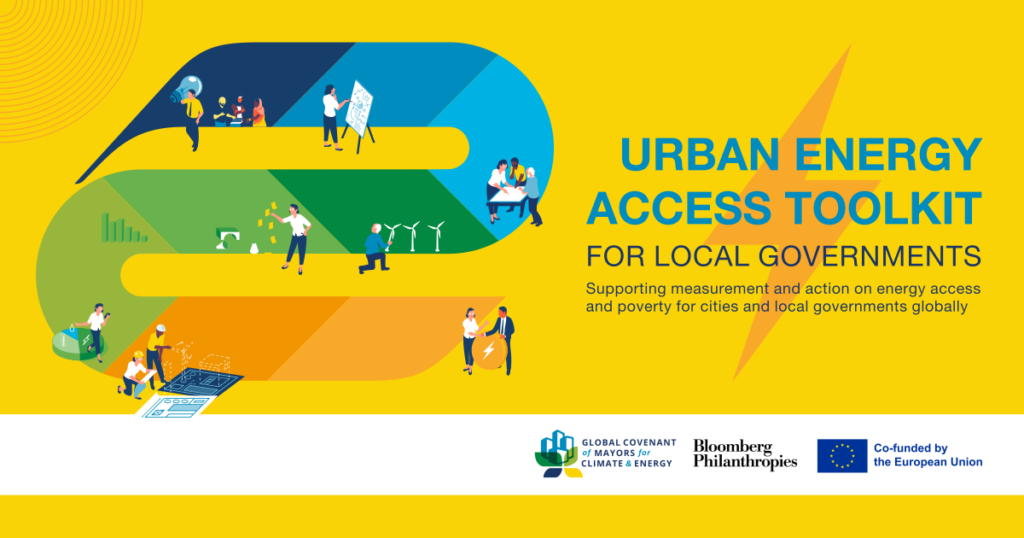Around 685 million people lacked access to electricity in 2022, according to The Energy Progress Report – and a further 2 billion people were still unable to cook cleanly and safely. Cities and local governments recognize the urgency and benefits of addressing energy access and poverty (EAP) but often face significant barriers. Responding to this need, at COP27 the Global Covenant of Mayors for Climate & Energy (GCoM) alliance launched the Energy Access and Poverty Pillar (EAPP) of the Common Reporting Framework (CRF): a set of indicators, guidelines, and timelines built to help its 13,000+ signatories take action towards a just energy transition.
Recognizing the importance of accompanying reporting with guidance and resources, the GCoM alliance is launching the ‘Urban Energy Access Toolkit for Local Governments‘ today, 18 June 2024 at the Global Cities Dialogue on the sidelines of ICLEI World Congress in São Paulo, Brazil. Developed in partnership with Arup and in collaboration with the Energy Access and Poverty Subcommittee of the GCoM Data Technical Working Group as well as several GCoM Regional and National Covenants, the Toolkit supports local government staff as they pursue measurement and action along their energy access and poverty journeys, and meet the requirements of the CRF. More specifically, it aims to:
- Define the local energy poverty context and energy access challenges using community stories and quantitative data;
- Analyze the systemic barriers they experience in implementing EAP interventions; and
- Identify pathways to address EAP, such as available powers and influence, suitable interventions, relevant stakeholders, and potential benefits.
The Toolkit contains 8 modules to guide local government officials through energy access and poverty planning. Crucially, it allows local governments to prioritize the modules most important and sensitive to their capacities and contexts, even if capacity is low or time is tight. Through the Toolkit – and by better understanding the lived experiences of its residents through the energy access and poverty lens – local governments can progress towards identifying energy access and poverty actions, share best practices, and leverage the EAPP indicators. This will empower communities to participate more fully in the economic, social, and cultural life of their neighborhoods.
